Search
Remove Ads
Advertisement
Summary
Loading AI-generated summary based on World History Encyclopedia articles ...
Answers are generated by Perplexity AI drawing on articles from World History Encyclopedia. Please remember that artificial intelligence can make mistakes. For more detailed information, please read the source articles
Search Results
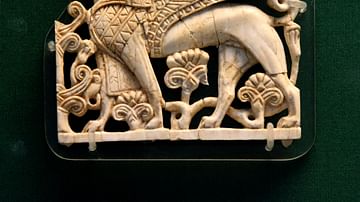
Article
The Nimrud Ivories: Their Discovery & History
In 1845 CE, the archaeologist Austen Henry Layard began excavations at the ruins of the city of Nimrud in the region which is northern Iraq in the present day. Layard's expedition was part of a larger movement at the time to uncover ancient...
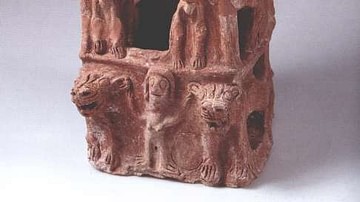
Definition
Ancient Israelite Art
Ancient Israelite art traditions are evident especially on stamps seals, ivories from Samaria, and carvings, each with motifs connecting it to more general artistic traditions throughout the Levant. Ancient Israel, and therefore its art...
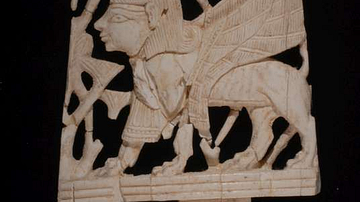
Image
Ivory Furniture Inlay with Sphinx
This object is an ivory furniture inlay depicting a striding sphinx. It was excavated from Samaria and dates to the Iron Age II (9th–8th century BCE). It has a length of 7.5 cm and a width of 7 cm. (The Israel Museum, Jerusalem) ©The Israel...
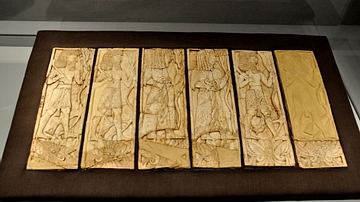
Image
Ivory Plaque from Nimrud (Ancient Kalhu)
This ivory plaque depicts six Assyrian worshippers in procession in six vertical rectangles. Note the details of their dresses. The men are bare-chested and wear kilts while the women wear a full dress. Both genders wear an impressive belt...
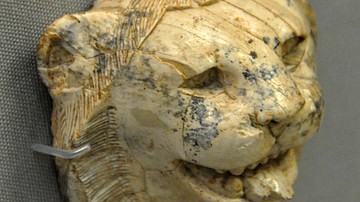
Image
Ivory Head of a Lion from Nimrud
Ivory head of a lion, part of the so-called "Nimrud Ivories" that decorated chariots, high-status furniture, and horse trappings. They were covered with thin gold leaf or ornamented with semiprecious stones. From Nimrud (ancient Kalhu) northern...
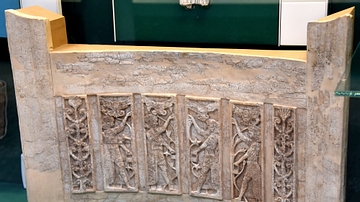
Image
Ivory Back Rest From Nimrud
The 6 ivory panels, set within a plane framework, would originally have been mounted on the concave inner surface of a curved wooden support. By analogy with a similar curved back rest from Salamis in Cyprus, it seems likely that this piece...
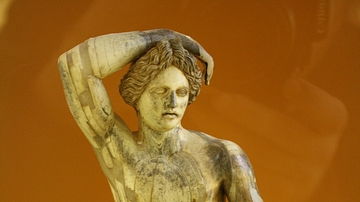
Image
Ivory Statuette of Apollo
An ivory statuette of Apollo Lykeios, 3rd Century BCE. The statuette was restored after being found in 200 pieces at the bottom of a well. (Agora Museum, Athens)
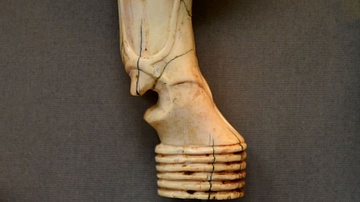
Image
Ivory Stool Leg
Stools were the most common pieces of furniture used in ancient Egypt. This ivory leg was probably attached to a frame by means of a leather thong lashed through the holes. From its cylinder shape, it was likely to have been the front leg...
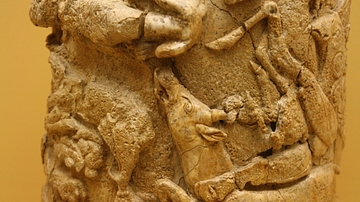
Image
Ivory Pyxis
A Greek ivory pyxis depicting griffins attacking stags. 15th Century BCE. (Agora Museum, Athens)
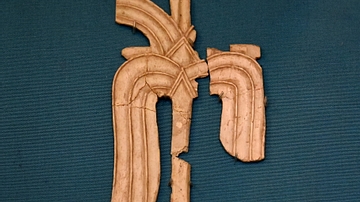
Image
Carved Ivory from Samaria
This carved piece of ivory, in a Phoenician style, is part of large number of ivories which were found in the city of Samaria during the excavations of J. W. Crowfoot in 1931-1935 CE. They consist, for the most part, of furniture inlays...